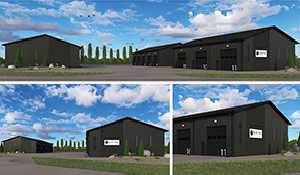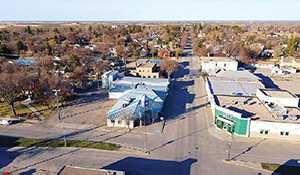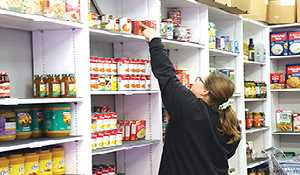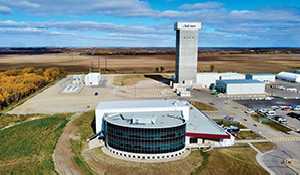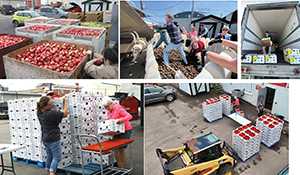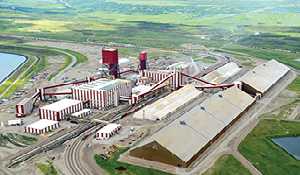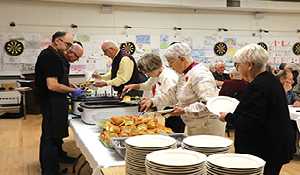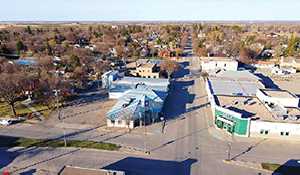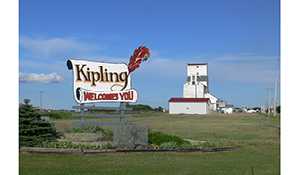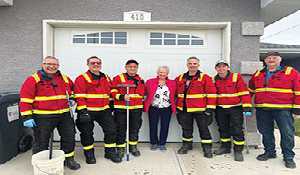Harvest of Hope wraps up 2023 harvest
October 30, 2023, 2:43 pm
Ryan Kiedrowski, Local Journalism Initiative Reporter


It’s been another successful year for the Harvest of Hope in Moosomin with the labours of many volunteers helping the ultimate goal of feeding the world. Harvest on the 275-acre project north of Moosomin wrapped up recently, and as the last bits of grain made their way into the bin, flakes of snow soon followed
While there are still bills to be paid such as fall rent and fertilizer, an estimated $84,000 was generated in gross revenue so far.
“There is an amazing community of farmers and agricultural businesses here in Moosomin, and they’ve stepped up to partner with us to say ‘we’d like to take all bite out of the issue of food security’,” said Kyle Penner, co-ordinator of the Harvest of Hope growing project. “As we wrap up the year, we will be putting the whole list together. I don’t want to miss anyone right now.”
Funds raised locally go to the Canadian Foodgrains Bank, which are then eligible to be matched by the government of Canada. With this support, the Foodgrains Bank (through 15 member agencies) can leverage donations from individuals, churches and businesses up to a 4:1 ratio. This means up to $25 million each year devoted to food assistance in the developing world.
“The incredible impact of charity work like this is why I stay involved,” Penner said.
Some amazing statistics from the Foodgrains Bank illustrate the continued need for food security. The overwhelming majority of people experiencing hunger (98 per cent) live in developing countries. Ironically, many of those experiencing hunger produce food for a living (70 per cent). War is also a factor as 60 per cent of those who are hungry live in countries affected by conflict.
While thoughts turn to images of famine or drought as a root cause for this hunger, a better explanation would be when people do not have enough nutritious food over a long period of time. An estimated 783 million people simply do not have regular access to nutritious food; 20 per cent of those are under the age of five.
This is the impetus behind the Harvest of Hope—to help feed the world through a local response.
The Harvest of Hope project is the largest growing project in Saskatchewan for the Canadian Foodgrains Bank.
As the farmers and volunteers gathered for the harvest, staff from Conexus Credit Union prepared lunch for the volunteers.
Harvest of Hope and other growing projects in Saskatchewan play a major role in supporting the Canadian Foodgrains Bank mission of alleviating world hunger.
Rick Block, Regional Representative for Saskatchewan of Canadian Foodgrains Bank, said the province alone contributed $2.7 million last year to the non-profit organization.
“In terms of this past fiscal year, the Foodgrains Bank brought in a total of just over $21 million in donations,” said Block. “That’s by individuals, that’s by businesses, and also numerous growing projects and community events in Canada.
“There would be approximately 200 growing projects and community events across Canada. In Saskatchewan we have more of the community events, as well, we have just over 40 of these growing projects.”
Funds raised from growing projects and community events are donated to the Canadian Foodgrains Bank. The organization then provides food assistance for people in need around the world.
The federal government matches donations to the Foodgrains Bank, allowing the help to go further.
“Of that $21 million of donations, Saskatchewan raised $2.7 million of that total, and of that $2.7 million, about $1.2 million came from growing projects and a few community events,” Block said.
“We’re definitely just about that 45 per cent mark, and we reflected that in Saskatchewan.
“It might go down to 40 per cent if you look nation wide, but really that is a significant bulk of our donation income that really comes from the concept of people working together saying, ‘hey, we’re better off working together to help alleviate hunger.’
“That’s really been a blueprint of the Foodgrains Bank since day one, you even see it in the structure throughout the organization. All of these organizations that say ‘if we work together, we’re able to accomplish a lot more than if we were each an individual agency doing its own thing.’ That’s then reflected down to the community grassroots level. Harvest of Hope is a great example of that.”
One of the growing projects in the province that contributes to Canadians Foodgrains Bank locally is Harvest of Hope in Moosomin. Harvest of Hope is the largest project in Saskatchewan.
Last year, Harvest of Hope brought in revenue of $130,000 and after input costs, an estimated $70,000 was donated to the Canadian Foodgrains Bank.
For this year, there are close to 35 growing projects in Saskatchewan.
“There’s 33 registered projects, two of them are in limbo, but one of the projects, which is called Grow Hope Saskatchewan, has six locations,” said Block.
“It’s a bit of a network of farm families that offer acres. There are 37 field sites that are part of Foodgrains projects.
“Harvest of Hope in Moosomin really represents all the pieces of a traditional growing project.”
With Harvest of Hope being the largest growing project in the province, Block was asked how it compares to other projects.
“You see a great cross-section of people that are involved, businesses will step up. For example whenever we are going out there, the Credit Union will say let’s provide lunch, Borderland Co-op will provide fuel, companies are saying we’ll bring machines, along with individuals who are offering the use of their machines and their time.
“One of the things that’s very unique with Harvest of Hope is its size. It is the largest growing project in Saskatchewan.
“There are a few larger across Canada, but only a few—my guess is it would be in the top five in the whole country. Harvest of Hope is at 288 acres, farming two quarter sections.
“At 288 acres, that’s a lot of input. Often we see projects that are 80 acres or 100 acres, they can get a lot of their inputs often covered, but at 288 acres, that’s going to require a good amount of partnership building and also some financial management.
“I really credit the Moosomin Harvest of Hope for the way they’ve done that. They have done that very successfully.
“Alongside growing projects, there are individual farms and farmers that continue on an annual basis. It might not officially be registered as a growing project, but they’re providing grain donations on an annual basis, it almost acts like a growing project.
“We’re in our 40th anniversary year, and there’s always new people coming to the table to support our work, and there’s people who have been doing it for 40 years.”




